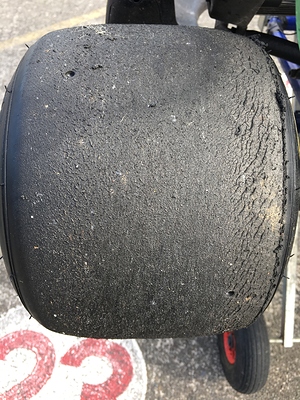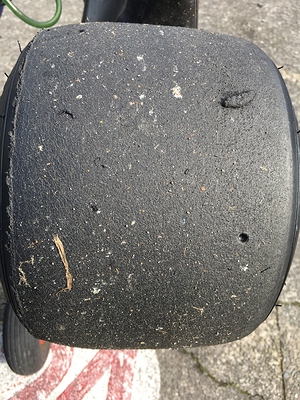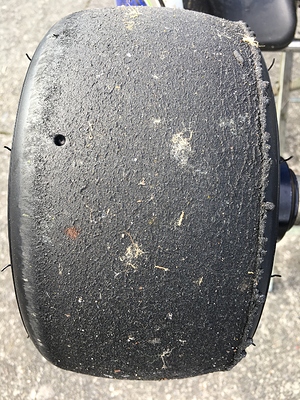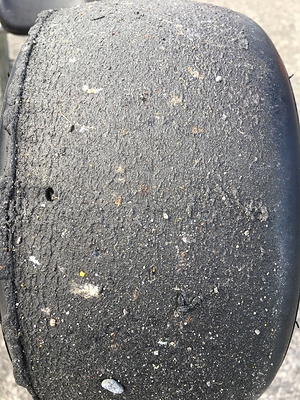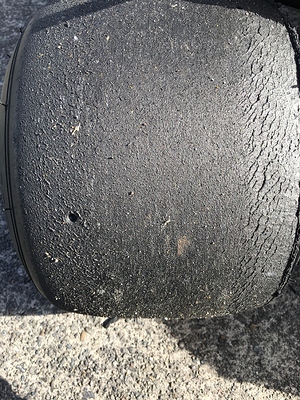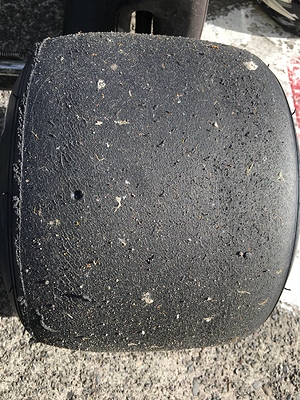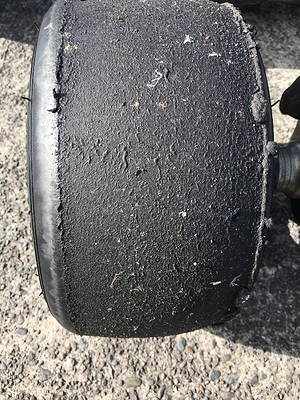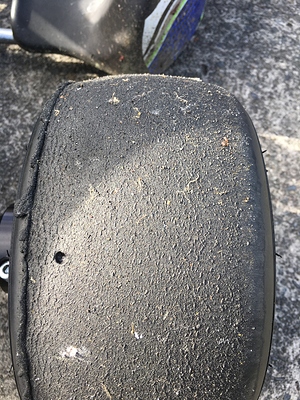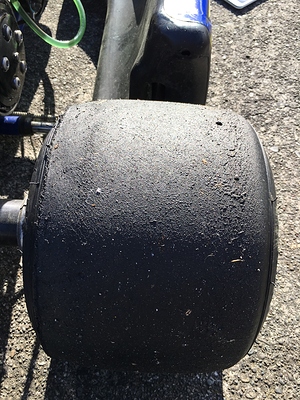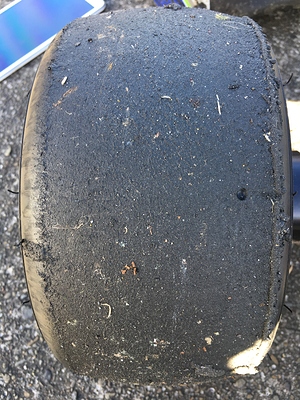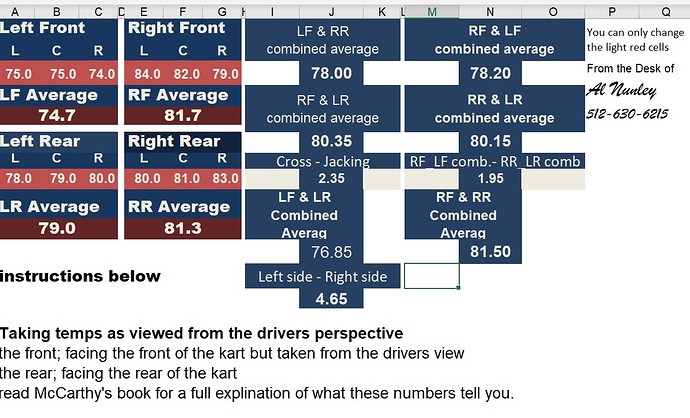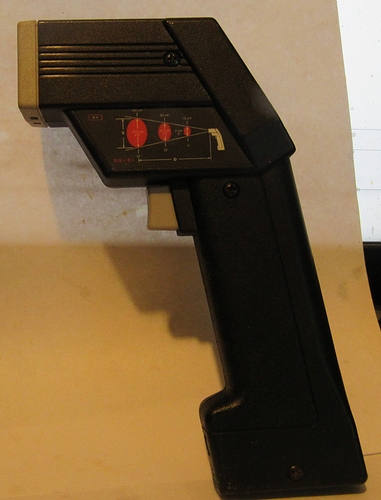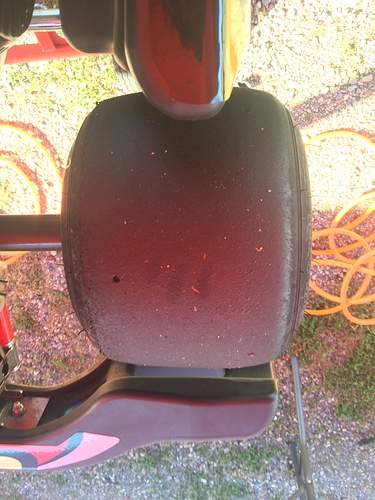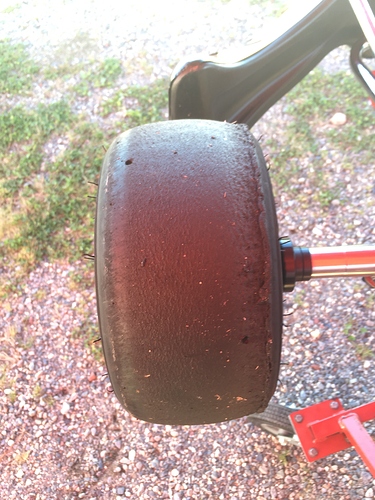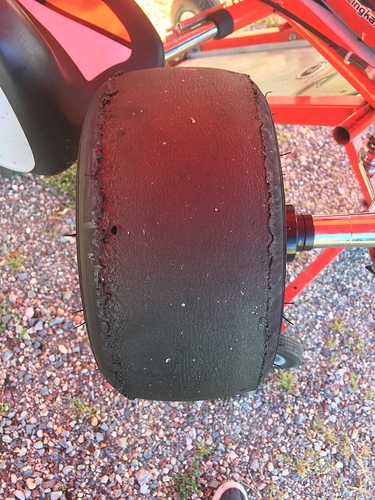That’s a lot of pickup! It should come off with some aggressive driving; but for that amount, it might be worth doing the old heat scraping method using a heat gun with this clamped to it: 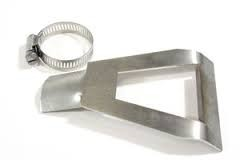
This guy seems to know what he’s talking about. It help me loads settling up my karts.
Col is great. I love the concepts he uses like “rate of lift” and so on. Very practical.
nice we will be in wa soon
So this is on my KZ with MG yellows on an anti-clockwise track:
(Pictures are top row LR/RR facing front. Bottom row are RF/LF facing back)
First run 1396mm rear 11 psi cold in tires
Second run 1391mm rear 9.5 psi cold in tires
Third run 1391mm rear 9 psi cold in tires
I’m not sure why the LR is coming up with that pattern and especially why on a anti-clockwise track. Any feedback on the 3 runs would be appreciated. Cheers
It’s possibly scrubbing on left hand bends because it’s not unloading quite enough, especially if there’s a long turn that really punishes the tires.
I think 9psi cold might be on the low side so you might have a bit more sidewall flex than you want.
How is the performance overall and during a run?
Sidenote, when it comes to shifters I’m a big proponent of running max track width at the rear (1400mm) and tuning everything else around that.
Granted you’re not far off at 1391 but something to consider.
Caveat: Widening the rear width only may exasperate the wear pattern you’re seeing on the LR by reducing the load transfer… so expect to have to make other adjustments too.
It was odd, around some corners it would slide in the back and in others it would start hopping. Overall in the run it would start with a little slide in general then get into its fastest range around lap 11 but a couple laps after that it started to slide again. Fronts on the final run increased by 2 psi by the end of the stint. The LH tire increased by 3 and the RR increased by 4
On Yellows, between 8.5-10.5 is the normal cold range we use.
Front wear looks fairly good. A little build-up on the outside shoulder of the one front would indicate that tire is dragging a little while turning, but the final set of pics looks pretty good.
The inside feathering on the rear would indicate that the kart is really squatting on that corner and possibly flat-sliding or power-sliding. Might be worth trying a longer rear hub to stiffen up that area between the tire’s inner shoulder and the axle.
I have a base psi to start with once I know the general sweet spot psi to shoot for. If I’m starting to pick up too much rubber, I take .5 to 1# out. If I need more grip, I increase air psi .5 to 1#.
Depends on track, compound, alignment, and weather.
Tire temperatures can also tell you a lot. An infrared tire temperature gun comes in real handy for this purpose. Now some will tell you a tire temperature probe is better, but it’s slower and questionably better. Keeping track of temperatures, using this spreadsheet, is somewhat of a pain, but fruitful.
Al, what does tire temps tell you that is actionable on track. What are you looking for? Too hot or cold on specific wheels for tuning?
All I ever do is check my pressure before I run.
Now I don’t think you’re going to get much of an education the 1st time you do this, but over time, you’ll see a pattern. Good lap times = what are the tire temps, bad lap times = what are the tire temps. It’s an accumulation of information, and information is always a good. F1 teams live and die with the use of information. They go to great pains to acquire tire temperature information. Excessive push or excessive loose can all be assessed with the infrared tire temperature gauge information. This is the gun I used.
Ok good point. Are temps still useful by the time you roll into pits?
Don’t make a cool down lap, but yes, we took our tire temps on the track exit lane, immediately after coming off the track. Maybe real time, while making laps, could/would be better, but that’s pretty much impossible for the average karter.
Thanks Al. Will pull out my trusty infra red thermometer.
it is becoming more realistic as the price of IR sensors continues to come down. it used to be too expensive for all but F1 teams; however, it’s quite common in club racing these days. It will be in karting before you know it.
Realtime tire temps can definitely be useful on-track info to aid your driving, especially if you can drive in a manner to maintain optimal temps. It will be even more important for setups because you will be able to see how energy is put into the tire through driving, track config, and setups.
Looks pretty good one the rears. Maybe a little understeer because of the slight feathering on the fronts. RF has a little outside build-up, could be dragging a bit in right-hand corners.
I think that makes sense. I felt some understeer on a 60 mph righthand bowl. Both tracks those tires raced on have long highspeed right handers.
